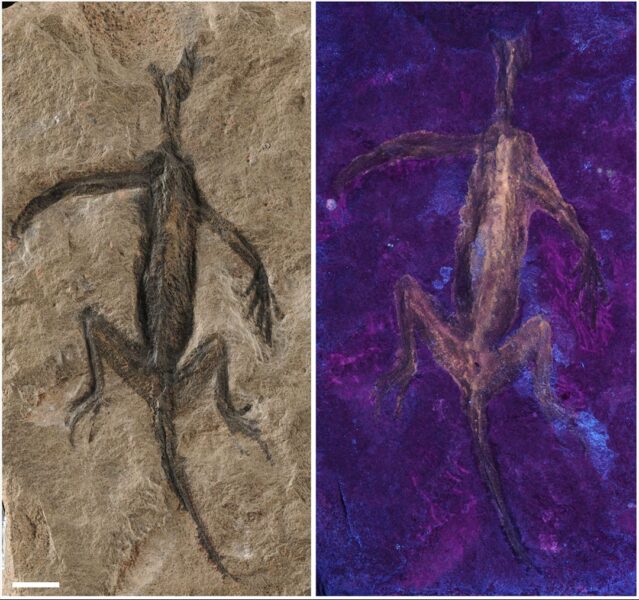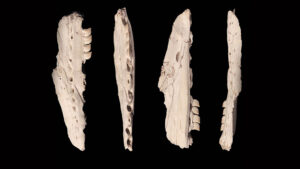In 1931, researchers discovered an incredible reptile fossil in the Italian Alps. The lizard-shaped fossil had a dark body, which looked like well-preserved skin. But this could not be further from the truth. It is just black paint. The fossil is partly a forgery.
Piero Leonardi first described the 280-million-year-old Permian fossil in 1959. He believed that the dark outline indicated soft tissue. But while its hind limbs and newly found bone scales are genuine fossilized remains, other sections are just carved rock and paint.
Researchers don’t blame Leonardi. Six decades ago, the technology to discern the difference between clever fake and fossil didn’t exist. All he did was describe what he saw. His description led to the fossil’s classification as a Protorosaurian.
Discovering the forgery was an accident
The modern research team didn’t set out to prove that the fossil was fake. They just wanted to learn more about it.
“Fossil soft tissues are rare but…can reveal important information, for instance, the external coloration, internal anatomy, and physiology,” lead author Valentina Rossi told Live Science. “We analyzed many samples from various parts of the body… [and] we are certain that, unfortunately, there is no trace of original soft tissue.”

The fossil under UV light. Photo: Valentina Rossi
This discovery is a disappointment to many, as it is one of Italy’s most famous fossils. For decades, it was considered key to understanding reptile evolution.
At the same time, the unusual preservation confused observers. What group of reptiles did it belong to? The team began their investigation with UV photography, which revealed that the fossil had a coating of varnish. At first, they hoped that a museum worker had applied this; the practice is quite common with display fossils.
However, microscopic analysis confirmed that the specimen had no soft tissue. The texture and composition of the material is nothing like it. Whoever instituted the hoax crafted the outline to supplement the real part of the fossil and reinforce what he or she thought the reptile should look like.
“The peculiar preservation had puzzled experts for decades,” said study co-author Evelyn Kustatscher. “Now, it all makes sense. What was described as carbonized skin is just paint.
This is not the first fake fossil in the world of paleontology and archaeology. The study highlights the need to apply modern technologies to specimens found decades ago.






